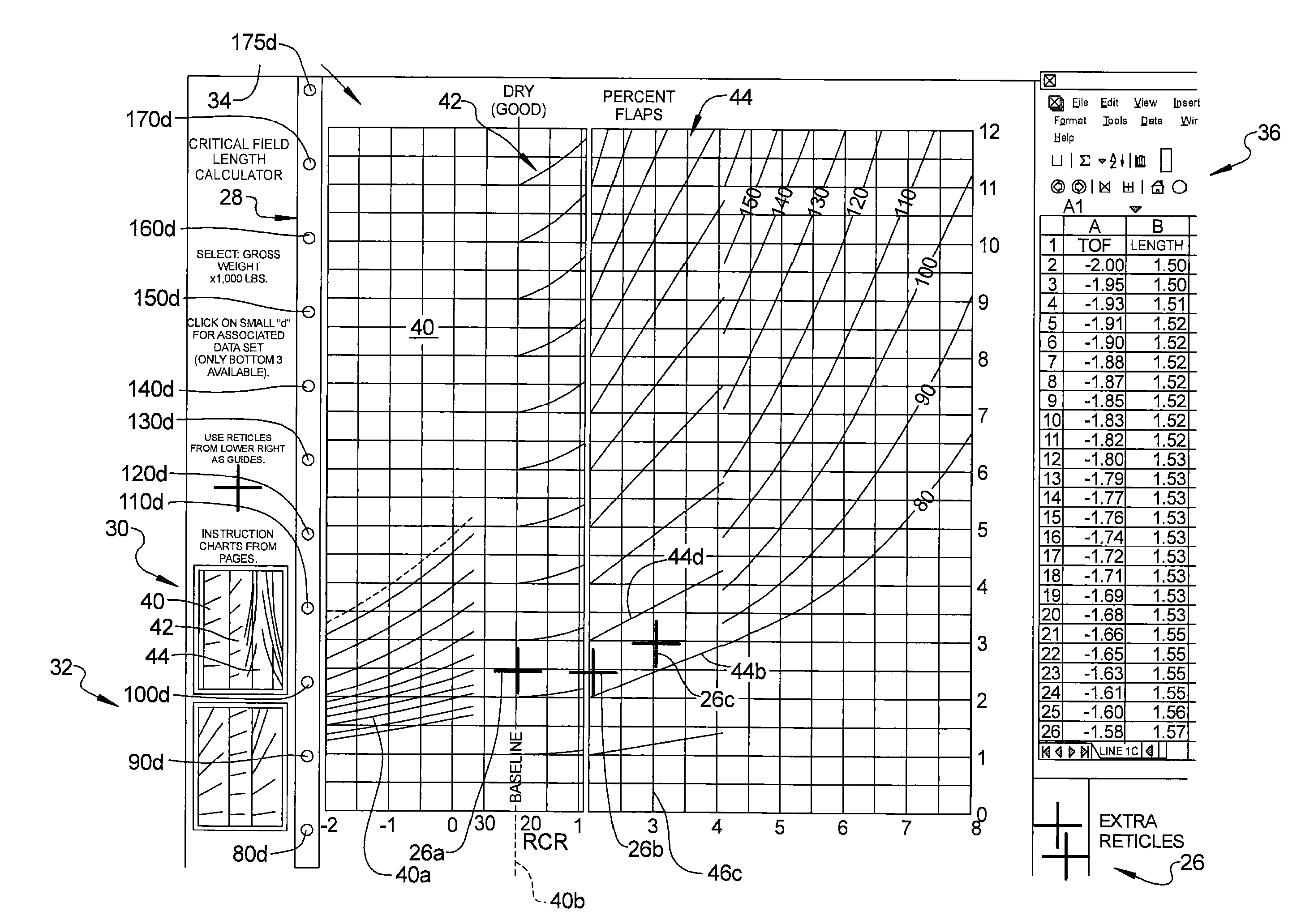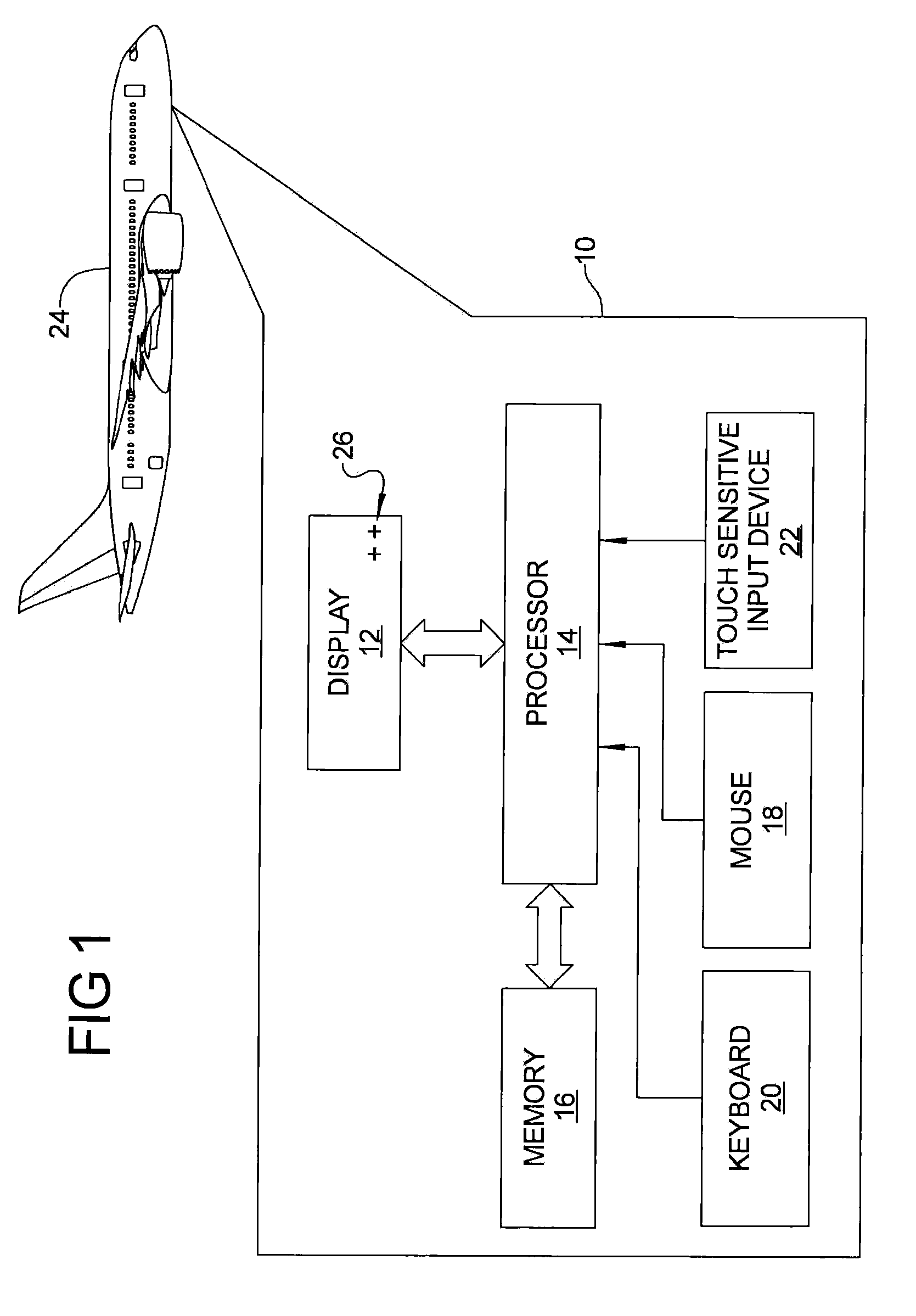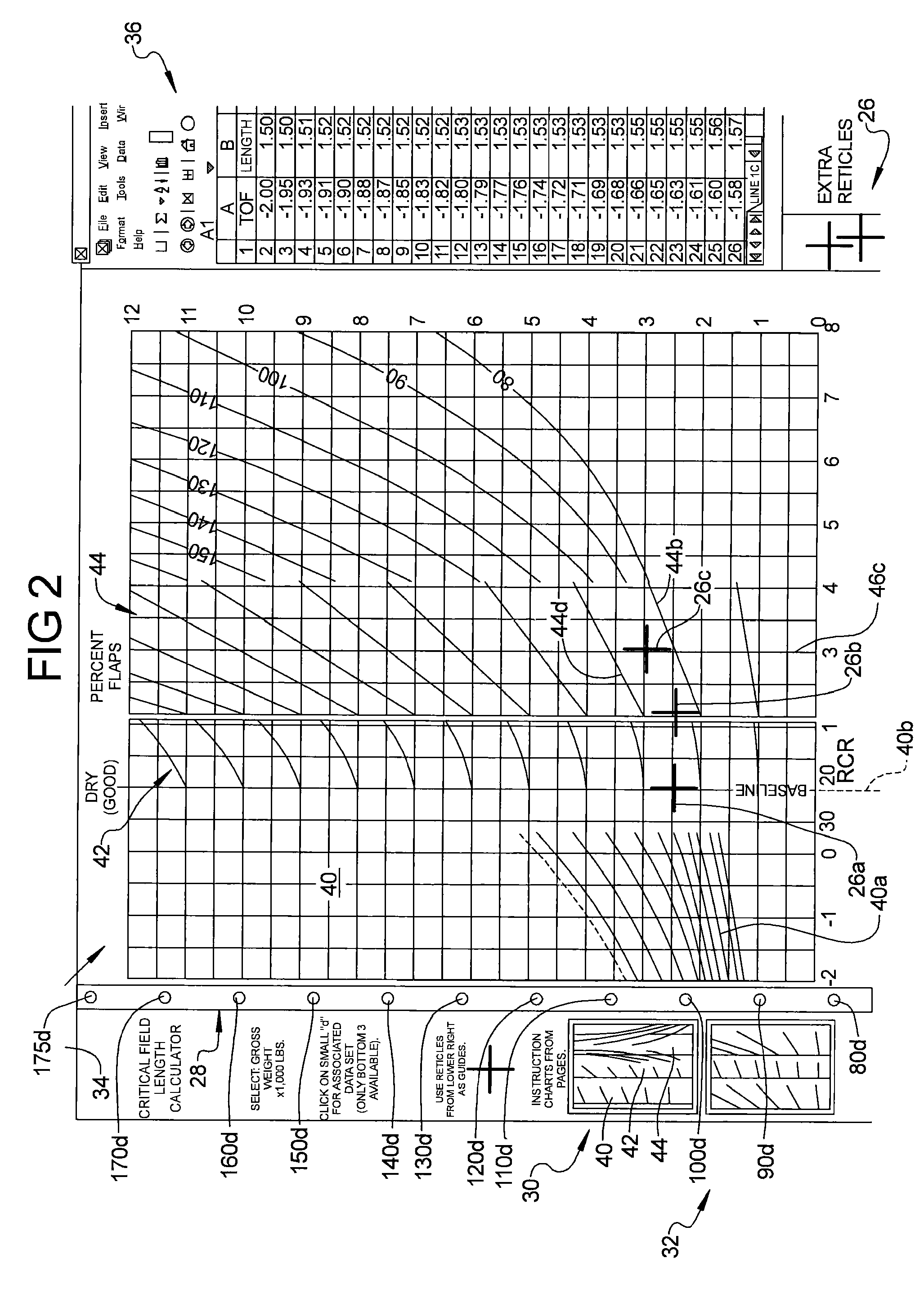Graphical display system and method
- Summary
- Abstract
- Description
- Claims
- Application Information
AI Technical Summary
Benefits of technology
Problems solved by technology
Method used
Image
Examples
Embodiment Construction
The following description is merely exemplary in nature and is not intended to limit the present disclosure, application or uses.
Referring to FIG. 1, there is shown a system 10 in accordance with the present disclosure. The system 10 in this embodiment may include a display 12, a processor 14, a memory 16 for holding a plurality of digitized graphs, a first user input 18 in the form of a mouse, an optional second user input 20 in the form of a keyboard, and an optional third user input 22 in the form of a touch sensitive pad. The system 10 may be implemented on any form of mobile platform, for example a commercial or military aircraft 24, a rotorcraft, a marine vessel, or any form of land vehicle such as a bus, van, truck, car, etc. The system 10, while having particular applicability to the aviation industry, could just as readily be used in non-mobile environments, such as within an office or any other terrestrial-based setting where there is a need to sequentially analyze several...
PUM
 Login to View More
Login to View More Abstract
Description
Claims
Application Information
 Login to View More
Login to View More - R&D
- Intellectual Property
- Life Sciences
- Materials
- Tech Scout
- Unparalleled Data Quality
- Higher Quality Content
- 60% Fewer Hallucinations
Browse by: Latest US Patents, China's latest patents, Technical Efficacy Thesaurus, Application Domain, Technology Topic, Popular Technical Reports.
© 2025 PatSnap. All rights reserved.Legal|Privacy policy|Modern Slavery Act Transparency Statement|Sitemap|About US| Contact US: help@patsnap.com



